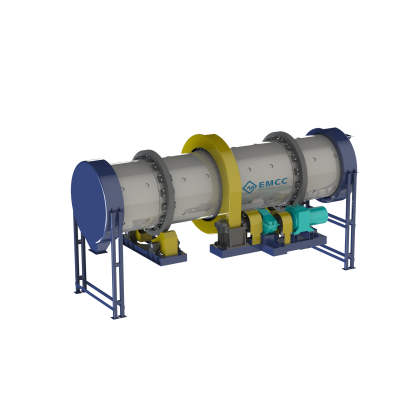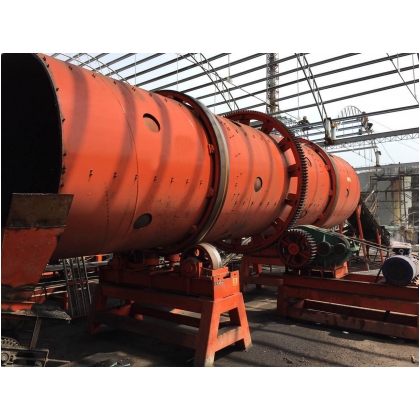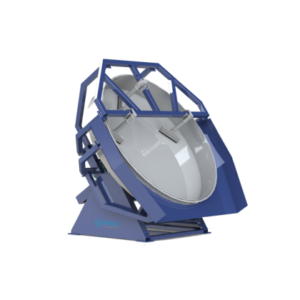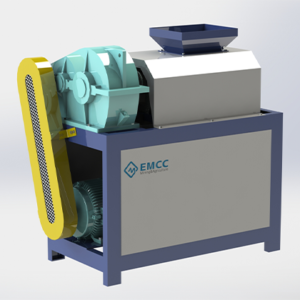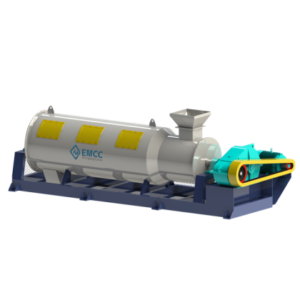Description
Drum granulator work by tumbling material in a rotating drum in the presence of a binding agent.
The binding agent causes the fines to become tacky and allows them to pick up additional fines, forming agglomerates in a process referred to as coalescence.
The tumbling action helps to round the agglomeratesand create a homogeneous mixture.
DEVICE DETAILS
EMCC design rotary drum fertilizer granulator according to the needs of your unique process and material. agglomerators are an ideal solution for high capacity agglomeration operations, or when agglomeration needs to be combined with a chemical reaction, such as in the production of granular fertilizers.
| -Optional Components | -Spray Systems | -Various Liner Options |
| -MachinedBases | -ScrewConveyorFeeder | -AutomaticGearLubricationSystem |
| -Variable Speed-Variable Slope | -Variable Frequencey Drive (VFD) |
WHAT CAN AGGLOMERATION DO FOR YOUR MATERIAL?
Drum granulator offers a variety of benefits. Among them, agglomeration allows you to:
| -ReduceVolume | -StabilizeMixturesDuringHandling | -Eliminate/ReduceDustProblems |
| -ControlHardness | -ReducePacking,StorageandTransportCosts | -ImproveProductPerformance |
| -Improve Handling |
APPLICATIONS & MATERIALS
Drum granulator (also known as balling drums, agglomeration drums, rotary granulators, or rotary drums) are very versatile pieces of equipment that can process a wide variety of materials. Our heavy-duty rotary drums are the ideal piece of equipment for high-capacity applications. They are also frequently used when an agglomeration – chemical reaction process is required. Agglomerators are commonly used in the following ways:
Heap Leaching/Ore Beneficiation (Ore Drums) – For the agglomeration of ore fines such as gold, silver, nickel, and copper
Granulation – For the granulation of both organic and inorganic fertilizers
Coating – For creating premium products with superior performance and handling characteristics
Conditioning – For materials such as potash, phosphate rock, and more
Balling – For the agglomeration of iron ore fines in the steel-making process
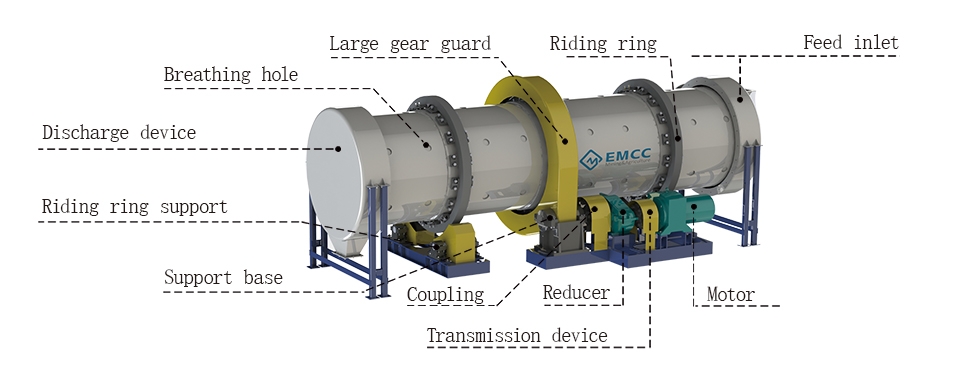
TECHNICAL PARAMETERS
| Model | Inner diameter (mm) | Length (mm) | Working speed (r/min) | Capacity (t/h) | Angle (°) | Power (kw) |
| GL-1240 | 1200 | 4000 | 17 | 1-3 | 2-5 | 5.5 |
| GL-1560 | 1500 | 6000 | 11.5 | 3-5 | 2-5 | 11 |
| GL-1870 | 1800 | 7000 | 11.5 | 5-8 | 2-5 | 15 |
| GL-2080 | 2000 | 8000 | 11 | 8-15 | 2-5 | 18.5 |
| GL-3210 | 3200 | 10000 | 9.5 | 15-30 | 2-5 | 37 |
ADVANTAGE
Size: Drum Diameters from 1m – 4.6m
Efficient Bed Turning/Flight Designs
Robust design and construction, according to the highest quality specifications
Various material options
Various liner options
Various Drive Assemblies Available
Our custom designs can also easily accommodate the addition of other equipment and accessories such as pipe reactors, discharge trommel screens, spray bars, and spargers. If you need to control emissions or dusting, EMCC’s discharge breeching design makes capturing these materials easy, so you don’t have to worry about contamination of the surrounding area.
WORKING PRINCIPLE
The raw materials enter into the rotary drum granulator by the belt conevyor. With the constant rotating of drum, the materials form a rolling bed, and moves along a certain path. Under the extrusion force produced, the materials agglomerate into small particles, which become the core, attaching the powder around to form the qualified spherical granules. The rotary drum is placed obliquely, the granules formed flow out through the outlet of the granulator. The shovelling plates inside the drum help granulating and cleaning


